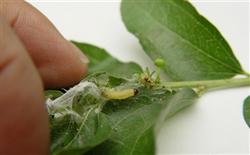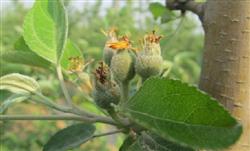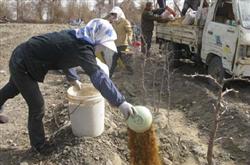How to control the jujube armyworm?

What harm does jujube armyworm have? How to control the jujube armyworm? Netizens who have experience in preventing and controlling jujube armyworm are also invited to help introduce that jujube armyworm mainly harms the leaves, flowers and fruits of jujube trees, which will seriously affect the yield and quality of jujube, so the farming network has sorted out the harm and control methods of jujube armyworm, which are listed below for netizens' reference. The harm and occurrence time of jujube armyworm: jujube armyworm has a single feeding habit, which is only harmful to jujube and wild sour jujube, and the larvae eat jujube leaves, flowers and fruits. When jujube armyworm is harmful to leaves, it often hangs jujube hanging or leaves and wraps them into balls and small bags, and hides the leaves into notches and holes. Jujube armyworm can bite off flower stalks, eat flower buds, and make flowers black and wither. At the same time, jujube armyworm can also harm jujube fruit, the young fruit is gnawed into potholes, and the damaged fruit is red and shedding or sticking with branches and leaves. The emergence of jujube armyworm begins in late March and the peak period is in the first ten days of April. the adults have strong phototaxis and the eggs are scattered on smooth branchlets and leaves. The first generation larvae hatched in early May (before the Beginning of Summer), mainly jujube buds and tender leaves, emerged in the first and middle days of June (after Grain in Beard), the second generation larvae appeared in late June (around the Summer Solstice), mainly harming flower buds, tender leaves and young fruits, resulting in a large number of young fruit shedding, adults Eclosion in late July, and the third generation larvae hatched in late August, mainly harmful leaves and jujube fruits. In late September, the larvae overwintered by cocooning and pupation. Control methods of jujube armyworm: first, scrape off the old warped bark of jujube trees in winter and spring and burn them centrally in order to eliminate overwintering pupae. Method 2. During the occurrence period of the adult of jujube armyworm, the phototaxis of the adult was used to trap and kill the adult with black light. Method 3. Before the jujube armyworm larvae overwintered after autumn, the overwintering larvae could be pupated and wiped out. Method 4. The first generation larvae were sprayed in mid-May and the second generation larvae were sprayed with 1500 to 2000 times of thiazuron 3 or 2000 times of phoxim in late June. Mainly to eliminate the first generation larvae, which is the key to the control of this insect. Management method of florescence of jujube tree grafting method of jujube tree
- Prev

How to replenish calcium in apple trees?
How to replenish calcium in apple trees? When is the best time to supplement calcium to apple trees? We also ask experienced netizens to introduce that when the apple tree is deficient in calcium, the front end of the root turns brown, the branches and leaves grow and become soft, which affects the accumulation of sugar in the fruit, the fruit powder is less, the fragrance is weak, the ripening of the new shoots is poor, and the tree potential becomes weaker. And will.
- Next

How to manage the florescence of jujube?
How to manage the florescence of jujube? Is there any way to prevent and control the flowering and fruit drop of jujube? Also ask experienced netizens to help introduce because the jujube tree has a long flowering period, a large number of flowers, and a very large consumption, and the flower bud differentiation in this period is carried out synchronously with fruiting branches and fruit setting, which leads to the non-fruiting or large amount of jujube flowering.
Related
- Moge, come on! The staff of the peasant association in the producing area of cantaloupe were frightened when the crowd gathered.
- Causes and Solutions of low Fruit setting rate of Apple
- Symptoms and control measures of passion fruit virus disease
- Fruit growing lesson: how do apple orchards keep high yields?
- Can you build orchards in the mountains? What are the pros and cons?
- How to manage the coloring period of Crisson grape?
- This paper introduces the processing technology of two kinds of fig products.
- How much is a month for retired teachers in rural areas by 2020?
- How can strawberry planting increase sugar content? We should pay attention to management in many aspects.
- What are the cultivation techniques on how to improve the yield of golden fruit?

